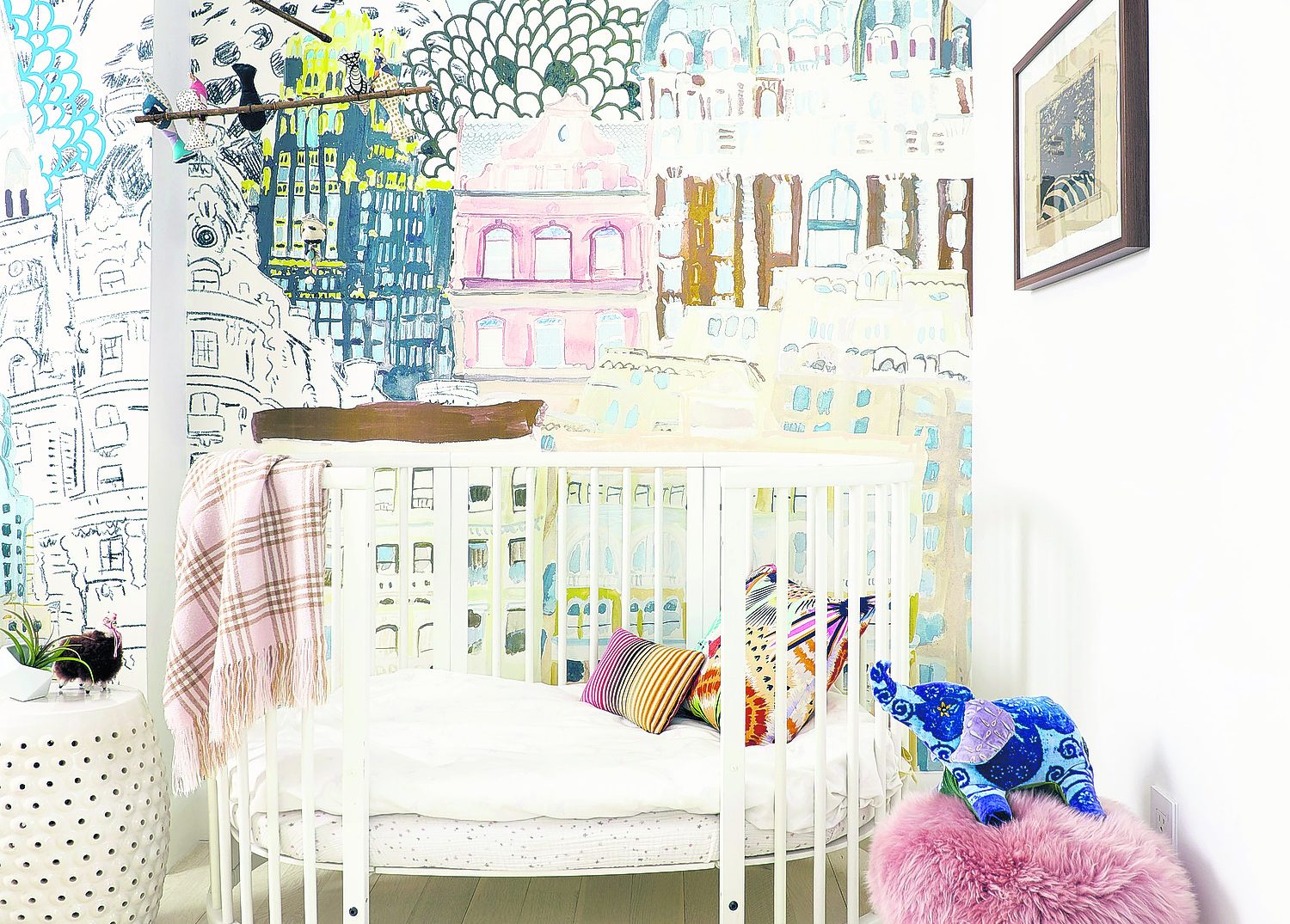
When interior designer Jenny Dina Kirschner was designing a bedroom for her first baby, she wanted to create the healthiest possible space — for her baby and for the environment.
She began by choosing healthier paints, natural-fiber rugs and organic fabrics.
“Babies put everything in their mouths,” Kirschner says. So her goal is “try to protect them as much as possible from exposure to those things that can be avoided.”
Creating an eco-friendly nursery has gained new attention lately, since news reports have said Britain’s Prince Harry and Meghan the Duchess of Sussex plan to paint the nursery for their soon-to-be-born royal baby with all-natural, vegan paint.
That’s the general approach taken by Brooke Berrios, an early childhood education teacher, when her son was born six years ago. Berrios, an instructor at the Kremen School of Education and Human Development at California State University, Fresno, was familiar with research into the impact of toxins on children’s brain development. She painted her son’s nursery with non-VOC paint (paint that doesn’t contain volatile compounds which give off gases) and bought organic cotton towels and bedding.
“I always get called hippie-dippie friend,” she says. But “toxicity from the environment can have an impact.”
What are the best ways to make sure your baby’s nursery is healthy, and has as little negative impact on the environment as possible?
DO SOME RESEARCH
Some furniture upholstered with 100% natural fibers may have insides that include formaldehyde, flame retardants or other unhealthy chemicals, Kirschner says, so find out what’s in them.
High-quality natural fiber rugs can actually last longer than some synthetics. And they can be left undyed, or colored with vegetable dyes.
Designer Paula Queen, founder of the children’s decor line Lil’ Pyar, suggests asking what dyes have been used on the rugs and fabrics you choose for a baby’s room.
Also, ask where the items are being made and whether they will need to be shipped. Buying locally is the greenest option.
BUY FOR THE LONG TERM
Interior designer and HGTV host Vern Yip advises parents to choose nursery items that can be used for decades — even generations — to come.
“Look at furniture that’s going into your nursery as long-term furniture, things they can use for their lifetime,” he says. “We didn’t really buy pieces, with the exception of the crib, that were intended for a nursery.”
For his children’s nurseries, Yip chose dressers with a removable diaper-changing tray on top, rather than buying a dedicated changing table that his family would get rid of once the kids were out of diapers.
He also suggests looking at second-hand furniture and vintage items rather than buying something newly manufactured.
These designers also recommend choosing chairs or tables that could be used elsewhere in your home in the future.
And light the room for the long-term: Yip points out that we often leave lights on in a nursery, so choosing long-life LED bulbs is practical on two levels. Tired, busy parents don’t have to change light bulbs as often, and LEDs waste far less energy than conventional bulbs.
Opt for items constructed from sustainably grown materials or made with environmental concerns in mind. Queen’s firm makes small seating poufs from canvas fabric remnants left over from other manufacturing.
“We really use every element of material that we can,” she says.
PEACE OF MIND
Kirschner points out that some new parents struggle to balance their desire for a healthy space with the convenience of synthetic fabrics and rugs that are easy to clean. Life with babies can be messy.
“I have a lot of clients with kids and babies, and they all want these synthetic textiles used everywhere, because they are so stain-resistant and virtually indestructible,” Kirschner says. “As a designer, I have to warn them that these are not healthy.”
Parents’ peace of mind is an important consideration in choosing nursery decor, and eco-friendly choices can bring that, says Lauren Myers, a developmental psychologist at Lafayette College in Easton, Pennsylvania.
“What babies really need are people who love them and respond to them,” Myers says. “And if a parent finds the baby’s environment soothing and stress relieving, that is good for the parent. Too often we forget that what is good for the parent is also good for the baby.”q



















